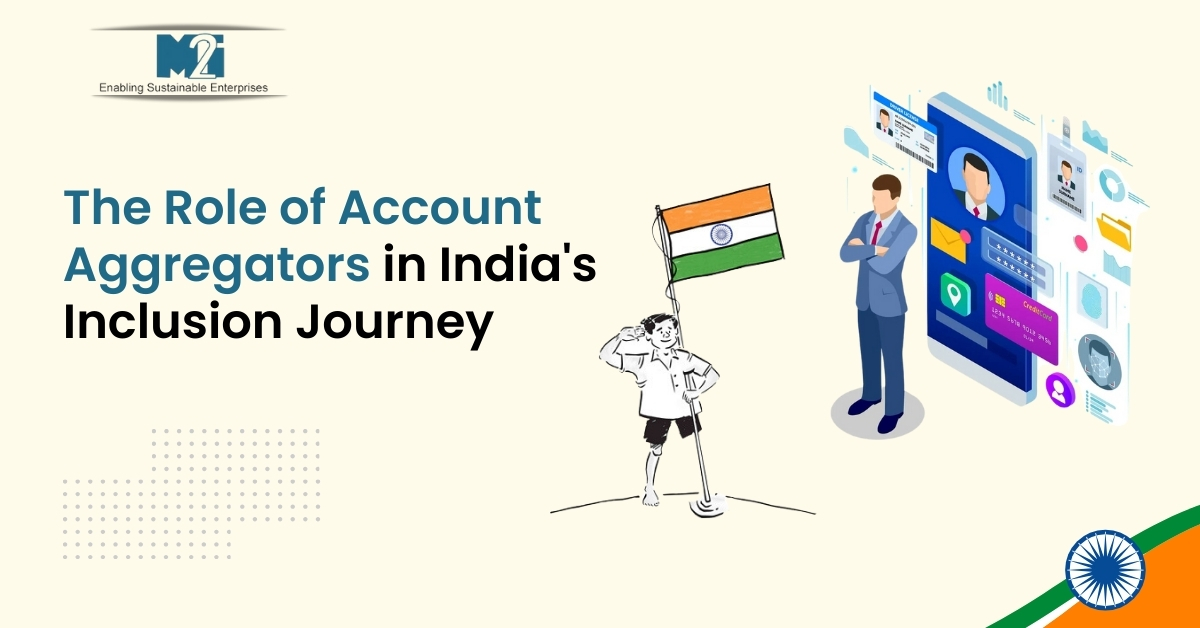
The Role of Account Aggregators in India's Inclusion Journey
India's financial landscape is on the brink of a major transformation with the introduction of the Account Aggregator (AA) network, a move that could potentially bring financial services within the reach of millions who have been traditionally underserved by the banking sector. This blog post explores how the AA system can pave the way for greater financial inclusion in India.Understanding the Account Aggregator Network
At its core, the Account Aggregator network is a digital framework designed to allow individuals to securely and efficiently share their financial information across different financial institutions with their consent. Governed by the Reserve Bank of India (RBI), this system aims to simplify the process of financial data sharing and make it more transparent, thus empowering consumers.
Breaking Down Barriers to Financial Inclusion
Financial inclusion is about ensuring access to financial services for everyone, particularly those from lower-income groups or rural areas. Despite significant progress, a substantial portion of India's population remains excluded from the formal financial system. Here's how the AA network addresses these challenges:
1. Streamlining Access to Credit
One of the most significant hurdles to financial inclusion is the lack of a comprehensive credit history for many individuals, which makes it difficult for them to access loans and other credit products. The AA network, by enabling the sharing of financial data such as bank statements, income, and transactions, can help banks and financial institutions assess the creditworthiness of individuals more accurately and efficiently. This could lead to more people gaining access to credit products tailored to their financial behavior and needs.
2. Empowering Consumers with Data Control
The AA system puts the power of financial data back into the hands of the consumer. By requiring explicit consent for data sharing, it ensures that consumers have full control over who accesses their data and for what purpose. This level of control and transparency can increase trust in digital financial services among those who have been wary of sharing their personal information.
3. Facilitating a Range of Financial Services
Beyond credit, the AA network can facilitate easier access to a broad spectrum of financial services, including insurance, investments, and savings products. By providing a more complete picture of an individual's financial health, institutions can offer personalized and suitable products, thereby enhancing the consumer's financial well-being.
4. Reducing Costs and Improving Efficiency
The digitization of consent and data sharing reduces the need for physical documentation, making the process of applying for financial products faster and less costly. This is particularly beneficial for micro, small, and medium enterprises (MSMEs), which often face challenges in accessing timely and affordable credit.
Looking Ahead
The AA network represents a significant step forward in the journey towards financial inclusion in India. By democratizing access to financial data, it promises to lower barriers for millions of Indians, enabling them to participate more fully in the financial system. As the network grows and more institutions join, its potential impact on financial inclusion becomes even more profound.
The success of this initiative, however, will depend on several factors, including the robustness of the technology infrastructure, the regulatory environment, consumer awareness, and trust in the system. If these challenges can be effectively addressed, the AA network could serve as a model for other countries looking to enhance financial inclusion through technology.
In conclusion, the Account Aggregator network is not just a policy innovation but a transformative tool that can unlock financial opportunities for the underserved. As it evolves, it will undoubtedly play a crucial role in shaping the future of India's financial services landscape, making it more inclusive, efficient, and consumer-centric.